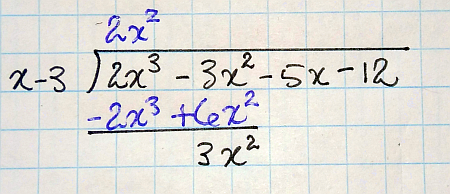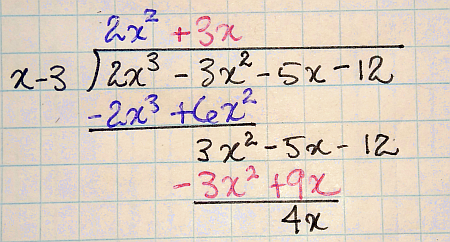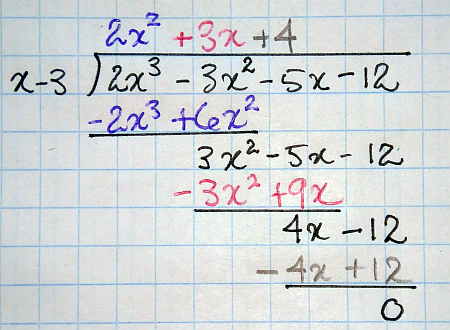How do you use synthetic division to divide #2x^3-3x^2-5x-12div x-3#?
2 Answers
Explanation:
The first thing we must do is find the value that makes
Now, we set up the problem:
If we have
3
Now, we bring down the
3
Now we add the
3
I just did the whole thing, and I hope you can see what I did. I took the sum of the answer and multiplied it to the divisor,
Anyways, we take the leftover number as the bottom, the
Explanation:
This answer uses polynomial long division - for synthetic division, please see the other answer!
We write the polynomial and its divisor down in long division form and work through the normal steps of long division:
Then we guess our first term in the quotient, which should subtract from the first term in the dividend:

After performing the subraction, we a left with our first remainder. We next drop the remaining terms in the dividend and guess our next term in the quotient:

and repeat for the last:

Which confirms that


